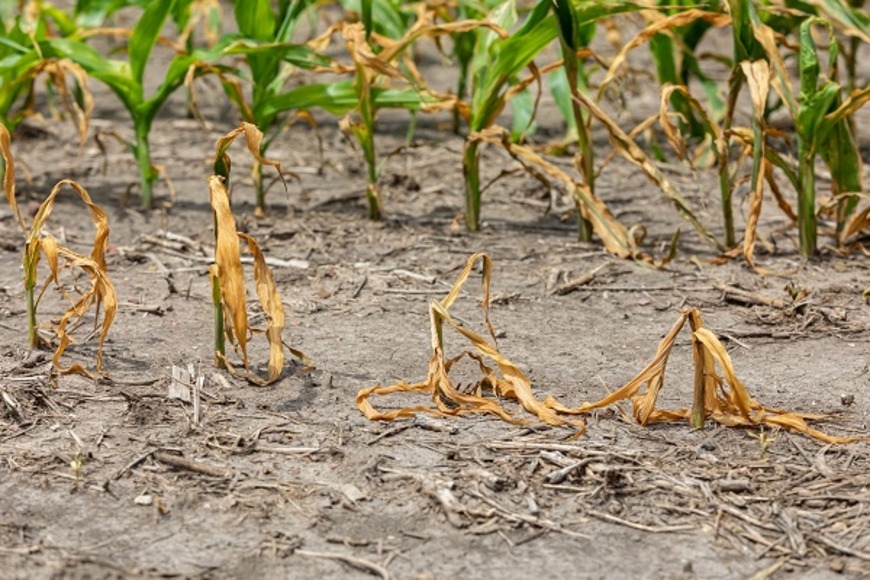We reach more than 65,000 registered users in Dec!! Register Now

Detecting the impact of drought on plants with user-friendly and inexpensive techniques
- February 24, 2023
- 61 Views
- 1 Likes
- 0 Comment
Now, a study published in the journal Trends in Plant Science presents a set of techniques that enable researchers to detect and monitor drought stress in plants in a cheap, easy and quick way. The authors of the study are the experts Sergi Munné-Bosch and Sabina Villadangos, from the Faculty of Biology and the Institute for Research on Biodiversity (IRBio) of the University of Barcelona.
Fighting the impact of drought on plants
The techniques available to detect and monitor the effects of drought stress in plants range from very simple and inexpensive measures (growth or relative water content analysis) to more complex and expensive approaches (omics technologies).
UB professor Sergi Munné-Bosch, professor in the Department of Evolutionary Biology, Ecology and Environmental Sciences, explains that these innovative technologies "have provided new opportunities to detect and monitor drought stress, but their cost generates inequalities around the world".
“Unfortunately —he continues— today the whole world is affected by the lack of water resources, especially in the context of the current climate change we are experiencing. And, unfortunately, countries with fewer economic resources are no exception. It should be borne in mind that most of the poorest countries are in Africa, which is also home to the world's largest arid and sub-arid regions”.
Laboratories with basic equipment
The study aims to respond to the need to establish effective and low-cost protocols to easily detect and study how droughts affect plants. Specifically, the authors present a battery of very accessible techniques that can be applied with basic laboratory equipment: precision balance, microscope, centrifuge, spectrophotometer, oven, camera and computer.
These laboratories could analyse different parameters on growth rates, leaf water content, pigments and leaf viability using the tetrazolium test, an organic heterocyclic compound that has traditionally been used in plant physiology studies.
"With these indicators, we can get a complete picture of which species are best adapted to a particular climate, or how a given crop responds to changing conditions in a given region in the current context of climate change", says Munné-Bosch.
“All these measures are easy to conduct. In addition, a specialised team can be assembled in a very short time to develop measures quickly and efficiently. And they can be implemented at a very low cost, so they are viable approaches worldwide", says the researcher.
The tetrazolium test: getting a classic back
In a second study (Trends in Plant Science, 2023), the team highlights the use of the tetrazolium test as a useful and easy-to-apply method for evaluating the effects of drought stress on plants. “This test not only allows us to detect whether a cell, tissue or organ is alive or dead, but it is also an excellent indicator of its longevity; in other words, it is a scientific tool that allows us to predict how long a plant will live. This can be especially useful for biodiversity management and conservation programmes, especially in the current context of climate change", says the researcher.
The impact of climate change is stimulating research into how plants adapt to new environmental conditions. "More than a stimulus, this is a necessity. Humans need to adapt to climate change, and they will always do so better hand in hand with nature, integrating with it. And to do so, it is essential to know the ecosystems and all the organisms that form part of them, including plants", says Munné-Bosch.
Designing and implementing quality scientific tools is determining to create management plans and to conserve the biodiversity worldwide. “This study contributes to a better understanding of the plants’ response to drought in a context of climate change, and, in addition, it can be useful for biodiversity management programmes”, notes the UB researcher Sabina Villadangos.
The study also makes it easier for these measures to be implemented worldwide. "It is necessary to bear in mind that if all countries do not coordinate in the face of foreseeable changes, the effects of global change will be devastating", concludes Sergi Munné-Bosch.
List of Referenes
- Sergi Munné-Bosch, Sabina Villadangos. Cheap, cost-effective, and quick stress biomarkers for drought stress detection and monitoring in plants. Trends in Plant Science, 2023; DOI: 10.1016/j.tplants.2023.01.004
Cite This Article as
No tags found for this post









